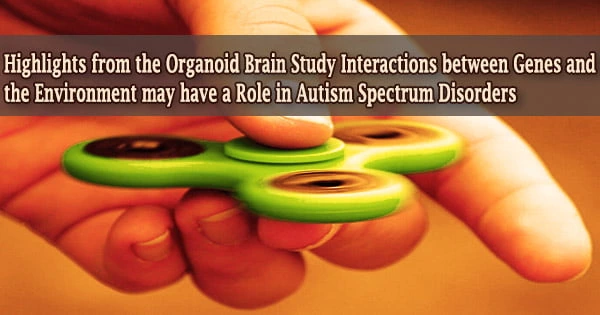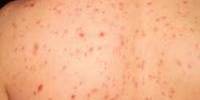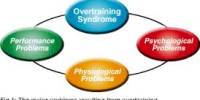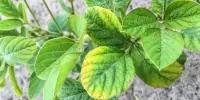In a brain organoid study, researchers at Johns Hopkins Bloomberg School of Public Health discovered that exposure to a common pesticide interacts with a common autism-linked gene mutation.
The findings provide one of the most compelling pieces of evidence yet that hereditary and environmental variables can interact to disrupt neurodevelopment. Researchers believe that genetic and environmental variables may have a role in the rising prevalence of autism spectrum disorder, a developmental disease marked by impairments in cognitive function, social interaction, and communication.
When compared to traditional animal experiments, the study’s use of brain organoids points the way toward faster, less expensive, and more human-relevant experimentation in this sector.
The Bloomberg School’s brain organoid model is made up of balls of cells that are differentiated from human stem cell cultures and replicate the developing human brain. Chlorpyrifos, a popular pesticide linked to developmental neurotoxicity and autism risk, significantly lowers levels of the protein CHD8 in organoids, according to the researchers.
CHD8 is a gene activity regulator that plays a role in brain development. CHD8 activity is reduced by mutations in its gene, which are among the strongest of the 100-plus genetic risk factors for autism that have been found so far.
The study, published online July 14 in Environmental Health Perspectives, is the first to demonstrate in a human model that an environmental risk factor for autism can compound the influence of a genetic risk factor.
“This is a step forward in showing an interplay between genetics and environment and its potential role for autism spectrum disorder,” says study lead Lena Smirnova, Ph.D., a research associate in the Department of Environmental Health and Engineering at the Bloomberg School.
Autism spectrum disorder, which was once considered clinically rare, now affects about 2% of all live births, according to the Centers for Disease Control and Prevention.
This is a step forward in showing an interplay between genetics and environment and its potential role for autism spectrum disorder.
Lena Smirnova
“The increase in autism diagnoses in recent decades is hard to explain there couldn’t have been a population-wide genetic change in such a short time, but we also haven’t been able to find an environmental exposure that sufficiently accounts for it,” says study co-author Thomas Hartung, MD, PhD, professor and Doerenkamp-Zbinden Chair in the Bloomberg School’s Department of Environmental Health and Engineering.
Hartung is also director of the Center for Alternatives to Animal Testing at the Bloomberg School. “To me, the best explanation involves a combination of genetic and environment factors,” says Hartung.
Because these interactions are difficult to examine, little is known about how environmental influences and genetic susceptibilities interact to raise risk for autism spectrum disorder. Traditional investigations with laboratory animals are costly and, in the case of brain and cognition diseases, of limited applicability to people.
Researchers have been able to employ human skin cells that have been turned first into stem cells and then into nearly any cell type and investigated in the lab thanks to advances in stem cell technologies in recent decades. Scientists have recently moved beyond simple lab-dish cell culturing to create three-dimensional organoids that better reflect the intricacy of human organs.
The researchers employed brain organoids to simulate the consequences of a CHD8 gene mutation paired with chlorpyrifos exposure in their investigation. The organoids were designed by a team led by co-author Herbert Lachman, MD, professor at Albert Einstein College of Medicine, to be missing one of the two normal copies of the CHD8 gene.
This modeled a significant, but not complete, decrease in CHD8 gene activity, comparable to what is seen in patients with CHD8 mutations and autism. The researchers then looked at the impact of exposure to chlorpyrifos, a pesticide that is still widely used on agricultural produce in the United States and elsewhere.
“High-dose, short-term experimental exposures do not reflect the real-life situation, but they give us a starting point to identify genetic variants that might make individuals more susceptible to toxicants,” says Smirnova. “Now we can explore how other genes and potentially toxic substances interact.”
The researchers discovered that brain organoids with only one copy of the CHD8 gene had only two-thirds of the usual quantity of CHD8 protein in their cells, but that chlorpyrifos exposure significantly reduced CHD8 levels, turning a mild scarcity into a severe one. The exposure showed how an environmental factor might exacerbate the effects of a genetic component, accelerating illness progression and symptoms.
The researchers created a list of chemicals in blood, urine, and brain tissue that have been proven to be altered in autism spectrum individuals in previous investigations. CHD8 deficiency or chlorpyrifos exposure, or both, drastically affected the levels of several of these putative autism biomarkers in the organoids, according to the researchers.
“In this sense, we showed that changes in these organoids reflect changes seen in autism patients,” Smirnova says.
According to the researchers, the findings pave the path for more research into gene-environment interactions in disease using human-derived organoids.
“The use of three-dimensional, human-derived, brain-like models like the one in this study is a good way forward for studying the interplay of genetic and environmental factors in autism and other neurodevelopmental disorders,” Hartung says.
“Gene-Environment Interactions in Developmental Neurotoxicity: A Case Study of Synergy between Chlorpyrifos and CHD8 Knockout in Human BrainSpheres” was written by Sergio Modafferi, Xiali Zhong, Andre Kleensang, Yohei Murata, Francesca Fagiani, David Pamies, Helena Hogberg, Vittorio Calabrese, Herbert Lachman, Thomas Hartung, and Lena Smirnova.
The study was funded in part by the Alternatives Research and Development Foundation and the Environmental Protection Agency (R839505).
Disclosures: Thomas Hartung, Helena Hogberg, and David Pamies are named inventors on a patent by Johns Hopkins University on the production of mini-brains (also called BrainSpheres), which is licensed to AxoSim, New Orleans, Louisiana, USA.
Thomas Hartung, Lena Smirnova, David Pamies, and Helena Hogberg are consultants for AxoSim, New Orleans, and Thomas Hartung is also a consultant for AstraZeneca and American Type Culture Collection (ATCC) on advanced cell culture methods. The remaining writers state that they have no real or potential financial conflicts of interest.
















